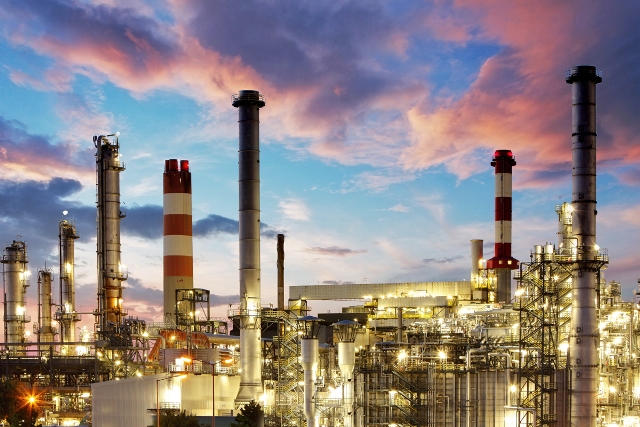Oil & Gas: Pick-up in demand to continue
by Prashant Vasisht, Vice President and Co-Head – Corporate Ratings, ICRA Limited
The oil and gas sector has witnessed recovery in YTD FY2022 after being adversely impacted by the Covid-19 pandemic, which had resulted in demand contraction in FY2021 and crash in crude prices in March and April 2020, although there was gradual recovery in subsequent months with pick-up in demand following improved mobility and easing of lock downs.
Crude oil prices touched multi-year highs in CY2021 which has been beneficial for the upstream sector translating into healthy profitability and cash flow generation. ICRA expects crude oil prices to remain elevated in the near to medium term due to increasing demand and graded increments in the production and supply by OPEC+ which will continue to support the revenues and profitability of the upstream oil and gas companies. Additionally, the global upstream capex is expected to be muted in the medium term, despite the rally in prices due to uncertainty related to long term oil prices, transition towards low carbon emissions and ESG goals of large oil and gas companies. Accordingly, the under-investment in upstream could lead to structural shortage of oil and gas in the future which could keep prices elevated.
The domestic production of crude oil is expected to increase by about 2-3 million tonnes over the medium term from 30.57 million tonnes produced in FY2021. Domestic consumption of crude oil is expected to grow by about 8-10% in FY2022 over FY2021 and 3-5% in FY2023 and FY2024. The domestic gas production is expected to increase from 79 mmscmd in FY2021 to 93 mmscmd in FY2022 and 106 mmscmd by FY2023 primarily on account of ramping up from RIL-BP’s KG-D6 and ONGC’s KG-98/2 fields. Gas demand is expected to grow in by 7% in FY2022 vis-à-vis FY2021, 16% in FY2023 and 7% in FY2024 owing to commissioning of new fertiliser plants and increasing offtake by CGD entities enabled by expansion in pipeline network and setting up of new LNG terminals. However, any further waves of the pandemic or lockdowns remain a key risk to the demand.
The domestic private sector companies had cut opex and capex due to the uncertainties of the pandemic and low crude prices. The PSU companies had also reduced capex but cuts were not as deep as those of their private counterparts. The recovery in crude oil prices have invigorated the capex programs of the domestic upstream companies. The credit profile of domestic upstream companies is expected to remain healthy over the medium term, due to anticipated elevated oil prices leading to robust cash accruals.
The Asian spot LNG prices are at multi-decadal highs vis-à-vis oil prices due to supply-side disruptions, low inventory levels, growing demand and weak hydroelectric and renewable power generation. The domestic gas prices,which increased in the last revision by around 62% to $ 2.9/mmbtu, are expected to witness substantial rise in the next revision for H1 FY2023 following the trend in gas prices at various international hubs. Despite the increase in domestic prices, the cost competitiveness of CNG and PNG(d) remains favourable for City Gas Distribution entities compared to alternate liquid fuels and domestic LPG. However, relatively higher spot LNG & term LNG prices will have a negative impact on City Gas Distribution companies as margins on PNG (I) & PNG (C) could be impacted.
The CGD sector is in midst of large capex cycle and while there was some impact in execution in 2021 due to impact of second wave of Covid-19, the pace is expected to pick up in 2022. The credit profile of incumbents in the Gas Utilities sector is expected to remain stable owing to the regulatory protection or dominant competitive position of most of the entities besides healthy margins and liquidity and strong financial flexibility.
The overall petroleum, oil and lubricants (POL) volumes are expected to grow by 8-10% in FY2022 and 3-5% in FY2023 on a YoY basis driven by increasing vaccination rates and higher economic growth. While growth is expected in MS consumption due to preference for personal mobility, HSD and industrial fuel growth is expected to be driven by pick up in the industrial activity and growth in economy even as ATF demand is expected to lag due to discretionary nature and perceived risk of air travel. Accordingly, the capacity utilisation of both PSU and private refiners is expected to improve in FY2022 vis-à-vis FY2021 and remain high in FY2023. The refining and marketing sector has also witnessed margin recovery in YTD FY2022, with core GRMs of refiners exhibiting improvementthoughthese remain below long-term averages. This has been driven by increasing demand amid limited supplies and permanent closure of refining capacities in high-cost locations such as Europe and Australia. Power shortage in China, high thermal coal and natural gas prices, and heightened fuel demand amid the energy crisis provided support to the middle distillate crack spreads. Besides, the healthy marketing margins of oil marketing companies are also expected to aid their profitability. Going forward, with expected improvement in domestic and global refinery capacity utilisation, the GRMs are expected to be sustained or witness some improvement in FY2023. Notwithstanding the high crude oil prices, the under-recoveries are expected to be minimal in FY2023 given the consistent hikes in domestic LPG prices. The capex in the sector is expected to increase going forward and be in the range of Rs 0.95-1.1 lakh crore per annum in next two years. The capex could be partly funded by potential asset monetisation, which coupled with low subsidy burden should result in some moderation in debt levels in the medium term. Additionally, the GoI’s divestment of BPCL would be a key monitorable to determine the future competitive dynamics in the refining and marketing sector.
The entities in the oil and gas sector are also looking at decarbonisation initiatives like increasing investments in the renewable power segment, expansion of CGD network, green hydrogen and biofuel initiatives, installation of EV charging stations at network outlets and diversification into downstream petro-chemical segments.
While, the credit profile of the oil and gas sector is expected to remain stable in FY2022 and FY2023 any further waves of the pandemic or lockdowns remain a key risk to the demand as was witnessed in the recent past when oil prices declined somewhat on fears of efficacy of vaccines against the new coronavirus variant and strong rebound in Covid-19 cases in Europe leading to lockdowns.
















